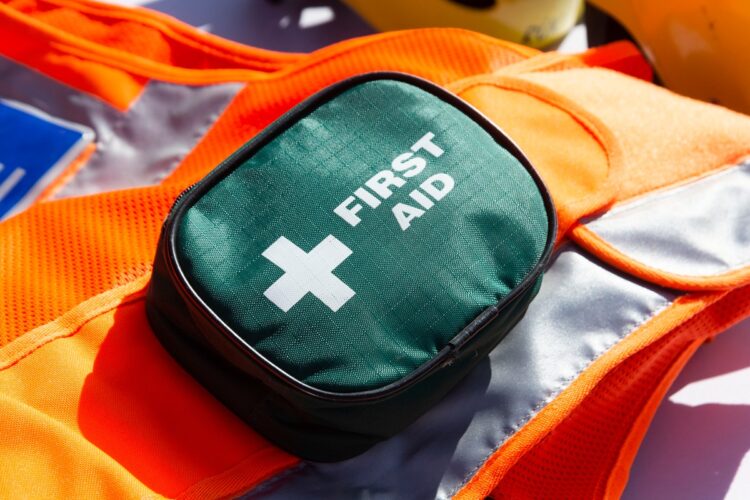It’s no surprise that natural disasters are out of human control. They come when we least expect, crashing away normalcy and leaving devastation in their wake. The best we can do is learn how to prepare for them to minimise the associated risks.
However, emergency preparedness goes beyond learning emergency protocols like evacuation. Individuals also need to equip themselves with skills and knowledge to use basic first-aid kit essentials. Below, we have highlighted the importance of first-aid kits in disaster response and the supplies that can make a difference during such chaos. Read on to learn more!
Importance of First Aid Kits and Survival Supplies in Emergency Preparedness
Immediate Medical Care
Time is crucial in emergencies. When a natural disaster occurs, most people are left with severe injuries. If such injuries are not attended to immediately, the chances of such victims surviving are minimal.
Having a first aid kit nearby can help ensure victims get the needed medical care at the right time, increasing their chance of survival. Moreover, having a first aid kit can help buy more time before professional help arrives. With some natural disasters destroying infrastructure, it can be challenging for the emergency response team to arrive on time.
Stabilising Injuries
Just like an unattended garden grows weeds over healthy plants, the same applies to injuries. If an injury is left unattended, it has a higher risk of becoming infected with harmful bacteria, potentially worsening the situation. First aid kit supplies like aero wound dressings can help stabilise injuries by preventing infections and controlling bleeding.
Supporting Emergency Responders
As the saying goes, many hands make light work. This same adage applies during emergencies. With the right knowledge and skills in using first aid supplies, individuals can join hands with emergency responders, helping save more lives. This collaborative effort can also help enhance overall efficiency as it alleviates the burden on overwhelmed medical personnel, ensuring immediate assistance reaches as many affected individuals as possible.
How to Create Your Survival Kit Supplies for Disaster Response
Medical Supplies and First Aid Essentials
Pulse Oximeter: A pulse oximeter is a must-have first aid kit that can help individuals save when helping affected victims. It’s an electronic device that helps you know whether someone is having trouble breathing by measuring oxygen saturation in the red blood cells.
Aero Wound Dressing: It’s natural for people to develop serious injuries after a natural disaster. Aero wound dressings are designed to help stabilise such injuries by preventing infection and controlling bleeding.
Placebo Inhaler: A Placebo inhaler is a perfect addition for individuals who suffer from asthma. After a natural disaster, one may be exposed to infections or cold air, which can trigger allergic reactions. A placebo inhaler can help get things under control.
Epipen: An Epipen is yet another indispensable first aid kit supply for people with allergic reactions. They are typically auto-injectors that contain adrenaline to treat severe allergic reactions.
Cleansing wipe: Before applying aero wound dressing on an open wound, it’s always wise to clean the wound to kill all the harmful bacteria. Sterile saline cleansing wipes are an excellent pick.
Hand sanitiser: The last thing you want is to spread harmful bacteria when dressing a victim’s wound. A hand sanitiser helps kill all the germs before and after you attend to a victim’s wound.
Protective Clothing and Blankets
To plan well, it is essential to first understand the most common natural disasters likely to happen in your area. For example, Australia is prone to experiencing heatwaves and bushfires, cyclones, floods and tsunamis. That said, you can opt for clothes made from natural fibres. This is because they are breathable and gentle on the skin.
Other protective clothes include sturdy and comfortable boots or shoes, heavy-duty gloves, wide-brimmed hats, insect repellent and, of course, sunscreen to protect you from excessive sun exposure.
Torch, Extra Batteries, and Chargers
Natural disasters are always unpredictable. Some, like floods and bushfires, may last up to three months. Adding torches and chargers to your arsenal can make a huge difference. If you carry a torch during a disaster, we recommend removing the batteries when not in use. If that sounds a bit too much, you can always opt for wind-up torches, as they don’t need any battery to operate.
Food and Beverages With Longer-Shelf Life
Again, natural disasters can last longer than expected. So remember to pack enough food for you and everyone in the household. This includes babies or pets. While it’s not possible to pack everything in the fridge, a three-day meal of food will do you great.
Don’t forget to bring water and other refreshment drinks as well. Drinking tap water after an emergency is unsafe. Unless the authorities have authorised it, never take the risk of drinking tap water.
Now, if you are not evacuating your home, you need to stock up on foods that are high in energy and have a longer shelf life. It’s unsafe to be in an unsheltered place during a disaster, so ensure you have plenty.
Photocopies of Your Essential Documents
Life continues even after a fatal natural disaster. That said, you must protect your assets at all costs. Get a fireproof safe to store all your essential documents, including passports, wills, land titles, mortgage papers, insurance papers, medical histories, etc. Also, make sure you scan them and get as many photocopies as you can. This comes in handy when you are unable to retrieve the original documents.
Taking photos and videos of valuable household items before a disaster is also important. In case of property damage, homeowners can make insurance claims.
While we can’t predict the occurrence of disasters, we can limit the casualties by taking proactive measures. Having a well-equipped first aid kit and knowing how to use it is the first step to making that change. Many lives can be saved with essential supplies like aero wound dressings and pulse oximeters. We hope you found this article helpful.

